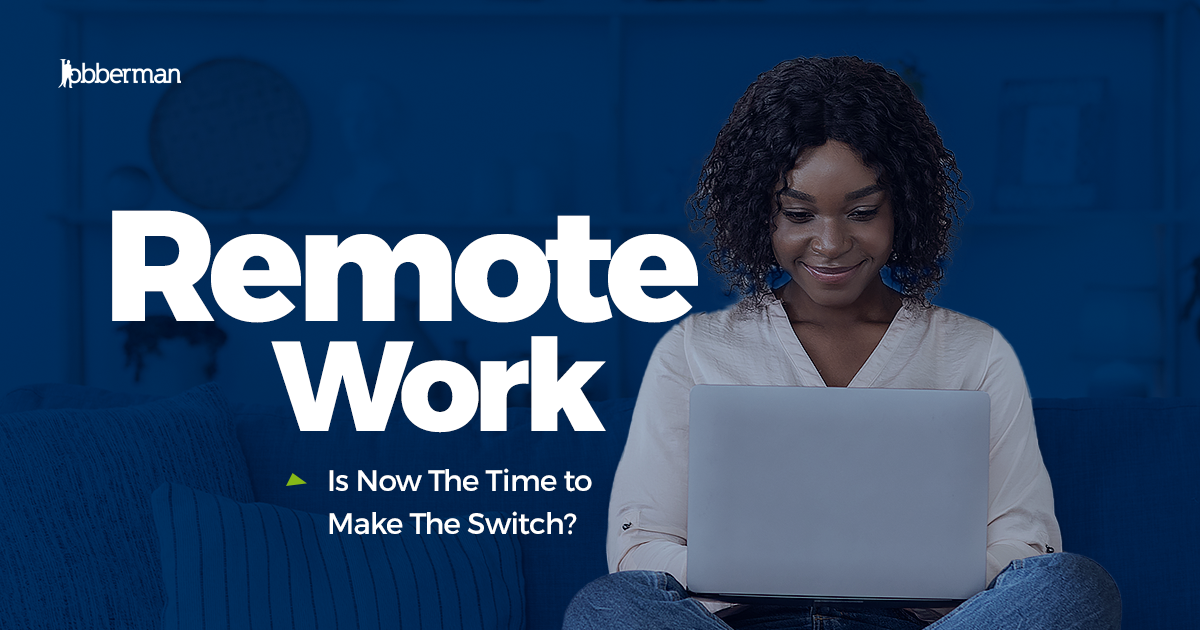Who hasn’t heard of remote work? Almost no one, right? That’s because this unique facet of the 21st century has become more the norm than the exception. Indeed, the global work culture has already shifted to this modern-day reality, with almost every country having its very own telecommuting workforce.
The transition to remote work was a necessity shaped by the pandemic. But it can’t be denied that its rise has been a long time coming. With so many technological advancements that anyone can get their hands on, working from anywhere is already a widespread reality, not just a much-desired yet distant dream. High-tech digital communication and collaboration tools are enabling many workers to amp up their productivity more so than they have ever done before. Today, people can choose to work from a cafe, the beach, or even from rooftops and use this advantage to make their lives more balanced and even-keeled.
But not all have made the “Big Change.” Some individuals and companies are still at a crossroads, asking themselves whether now is the opportune moment to go for it and adopt remote work permanently. This article probes this timely question, weighing the clear-cut benefits and evident challenges while also looking at the more profound implications for work-life balance, the impact on the environment, and how workspaces will evolve as a consequence of this change.
Table of Contents
Zooming in on Remote Work

Remote jobs, without a doubt, have shown their viability. Here, technology plays an enabling role, making sure that tasks and various forms of communication happen as smoothly as they do in physical setups. Extraordinary platform innovations like Microsoft Teams, Slack, or Zoom have entrenched themselves in our psyche as household names, diminishing the previously vast chasm between virtual employees and their workplaces. Yet, as the initial enthusiasm wanes, we must determine how sustainable off-site work is beyond the necessity of the pandemic years.
Determining Work-Life Balance

One remote work advantage that brings so much joy to the working population is its capability to create more harmony between work and life. By making daily commutes a choice and not a mandatory everyday requirement, employees can grab precious hours to invest in quality time with family, unwinding activities, or stress-diminishing hobbies.
Yet, there’s a lingering issue. When work and home spaces are merged, it can be so difficult to identify where you’re at as you go about your day. As a result, you can lose focus, which can easily translate to lower productivity. This means you’ll have to work longer hours for the same amount or quality of work. This can hamper your efforts to balance meeting your professional responsibilities and attaining the goals you want to achieve in the personal aspects of your life.
The Environmental Perspective

The ecological upsides of working virtually are also immense. There’s reduced commuting, which means lower carbon emissions and less traffic congestion. As a result, you save plenty of time, you get cleaner air, plus, you get to safeguard the resources of Mother Nature.
However, the sustainability of telecommuting also depends on the energy efficiency of home offices and the digital infrastructure supporting remote work. Ultimately, this raises questions about the overall carbon footprint.
Rethinking Workspaces and Company Culture
Telecommuting reshapes traditional views on office spaces and corporate culture.
As the traditional office loses importance, companies need to rethink ways to promote a sense of community and support productivity. This scenario creates chances for creative workplace options such as co-working spaces and virtual reality meetings. These can provide the flexibility of remote employment while addressing the need for occasional in-person interactions.
The Economic Angle
Economically, home-based work allows companies to reduce overhead costs associated with keeping large office spaces. For employees, it can mean savings on commuting costs and work attire.
However, this economic benefit is not uniformly distributed, as industries that rely heavily on physical presence, such as retail and hospitality, cannot capitalize on remote work’s financial advantages. This limitation highlights a disparity in the economic impact of telecommuting between those sectors that can adapt to digital platforms and those that cannot.
Addressing Inequality
Within the sectors where telecommuting is feasible, a digital divide prevents access to the benefits of working from anywhere. Employees in lower-income brackets may struggle with inadequate home office setups that lack the necessary technology or internet reliability. Consequently, they face additional expenses instead of realizing potential savings.
Similarly, small businesses might face financial constraints in providing the technological infrastructure required for their remote employees to work effectively. This situation underscores the need for policies that ensure equitable access to technology and support for creating conducive work-from-home setups for all employees.
Is Now the Time?
Deciding to switch to virtual work permanently involves considering these multifaceted aspects. It’s not only about whether it’s doable. We must also consider what we want to happen to the future of work. Can we envision a world with work that is flexible, inclusive, and environmentally sustainable? If this is the case, enabling remote work, which has its advantages and difficulties, could be a move in that direction.
Nevertheless, it is evident that more than a universal solution is needed. The perfect model could be a combination of both remote work and in-person office days to maximize the advantages of each setup. Such a model can accommodate the diverse needs of employees, foster collaboration and innovation, and still reap the environmental and economic benefits of telecommuting.
Originally written by Sophia Young.





